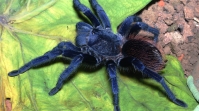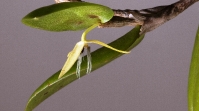Search Results for Tag: plants
Bizarre but valuable: Top 10-list of new species 2011 draws attention to biodiversity
Short time ago the International Institute for Species Exploration at Arizona State University anounced their picks for the top 10 new species described in 2011. It’s the fifth time in a row that attention-grabbing species have been nominated to open the world’s eyes for “the biodiversity crisis and the unsung species explorers and museums who continue a 250-year tradition of discovering and describing the millions of kinds of plants, animals and microbes with whom we share this planet,” as Quentin Wheeler, an entomologist who directs the International Institute for Species Exploration at ASU, said.
When you have a look at the gallery below you will have to admit that this year’s list is quite exquisit. It’s members come from Brazil, Myanmar, the Dutch Caribbean, South Africa, Papua New Guinea, Spain, Borneo, Nepal, China and Tanzania. You will find a sneezing monkey there, a beautiful but venomous jellyfish, an underworld worm and a fungus named for a popular TV cartoon character.
The nominations had to be “species that capture our attention because they are unusual or because they have traits that are bizarre,” said Mary Liz Jameson, an associate professor at Wichita State University who chaired the international selection committee. At the institute’s website you will also find a Google world map that pinpoints the location for each of the top 10 new species.
Madagascar’s New Species

For scientists looking to discover new species, Madagascar is the treasure trove: according to a new World Wildlife Fund study, scientists have found more than 600 new types of plant and animal life in the last decade alone! Why is Madagascar such a breeding ground for diverse creatures? The island is pretty isolated, and it’s stayed that way for centuries. Plus, the landscape is varied: there’s mountains, rainforest, and everything in between.
Researchers have discovered everything from the 10 cm-long Berthe’s mouse lemur to the “Glam Rock” chameleon in the picture above. National Geographic has some great shots of the new species, from tiny and furry to scaly and thorny.
But the report is also a reminder that some of these very special – and unique – creatures are under threat due to climate change and the practice of clearing forests in Madagascar for wood and other natural resources.
The WWF says the only way to protect all those species is for the locals themselves to get involved.







Feedback